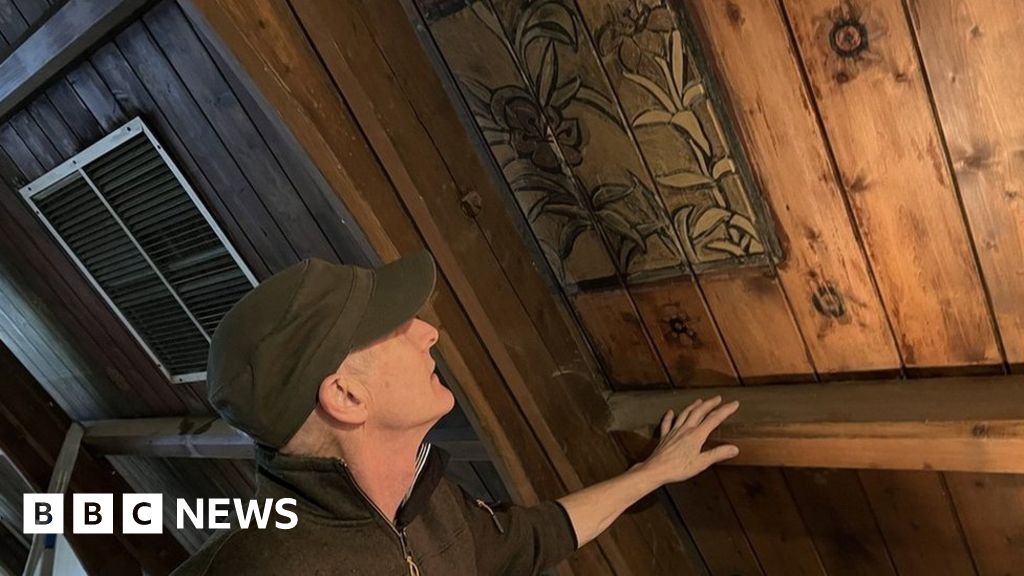- By David Knox
- BBC Scotland Selkirk
Chris Wemyss inspects one of the floral panels
A Borders music venue is searching for more information about the Polish soldiers believed to be behind folk art paintings on its ceiling.
The designs were only highlighted by architects during a recent survey of the former church in Galashiels.
Research by staff at the MacArts venue suggests Polish soldiers billeted in the church hall were responsible.
MacArts manager Chris Wemyss said: “We are told the ceiling was painted by the soldiers as a thank you.”
Tens of thousands of Polish soldiers were billeted in the Borders during and after World War Two.
Many were used to guard the east coast of Scotland from a Nazi invasion, while others prepared for a return to the frontlines of Europe at local training camps.
Their legacy can still be seen in the area with a statue to Wojtek the Bear, who was an adopted member of the Polish 22nd Transport Corps, in Duns town centre.
There are also several war memorials and the impressive Great Map of Scotland in Peeblesshire built by veterans who were based in the area.
A red and white stained glass window was also presented to Our Lady and St Andrew’s Church in Galashiels by the soldiers.
It is believed the panels were painted by Polish soldiers
Mr Wemyss said the MacArts ceiling was another reminder of the contribution made by the Polish army in the Scottish Borders.
He added: “The ceiling is a great example of folk art and we have been advised by many people that it is the work of the Polish soldiers during the war.
“We have now approached the Polish embassy as well as the regiments who were billeted in Britain to see if we can get corroboration, and even find out more about the men who took the time to paint the ceiling.”
The MacArts building was opened as the Ladhope Free Church in 1885.
Architectural heritage sites have details about stained glass windows being added in the following decades, along with a smaller side hall.
But no official records have been found that indicate when the decorative ceiling artwork became a feature.
The venue now plans to incorporate upwards lighting into the building to illuminate the floral designs.
MacArts manager Chris Wemyss says the ceiling has an important story they want to celebrate
Mr Wemyss added: “We had always accepted that the ceiling was just part of the fabric of the building and never thought too much about it.
“We now realise it has its own story, an important story, and we want to celebrate that.
“It’s dark up there just now, the wood panels are dark, so we’ll look to get upwards lighting and let everyone fully appreciate the work of the soldiers.”
It was following the German invasion of Poland in 1939, that a large section of the country’s army withdrew to Britain to regroup and retrain.
Up to 60,000 Polish soldiers were used in defending Scotland’s east coast during the war years, with many of them based in and around the Borders.
Thousands of Poles also prepared for D-Day at local training camps.
Historian Aileen Orr at the Wojtek the Bear statue in Duns
Borders historian and author Aileen Orr said: “At any one time there were around 2,000 Polish soldiers based in the Scottish Borders during and just after World War II. They were in every town.
“They made a huge contribution to the area when they were here, and it’s a shame that so much of what the Polish soldiers did wasn’t officially recorded.”

